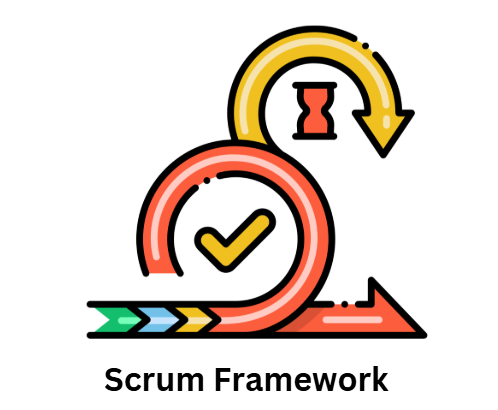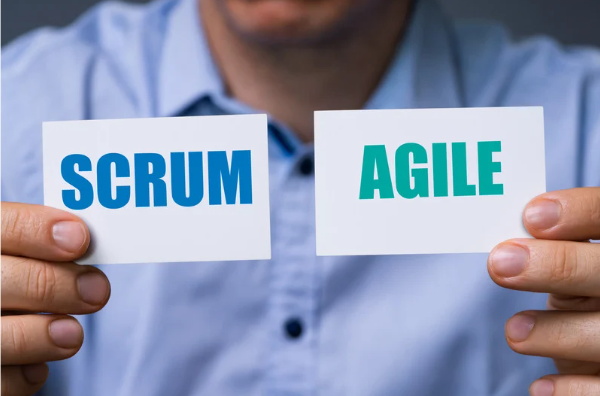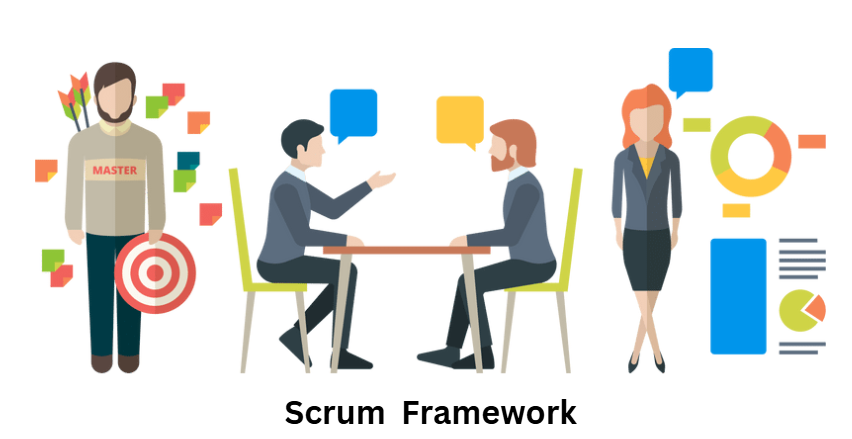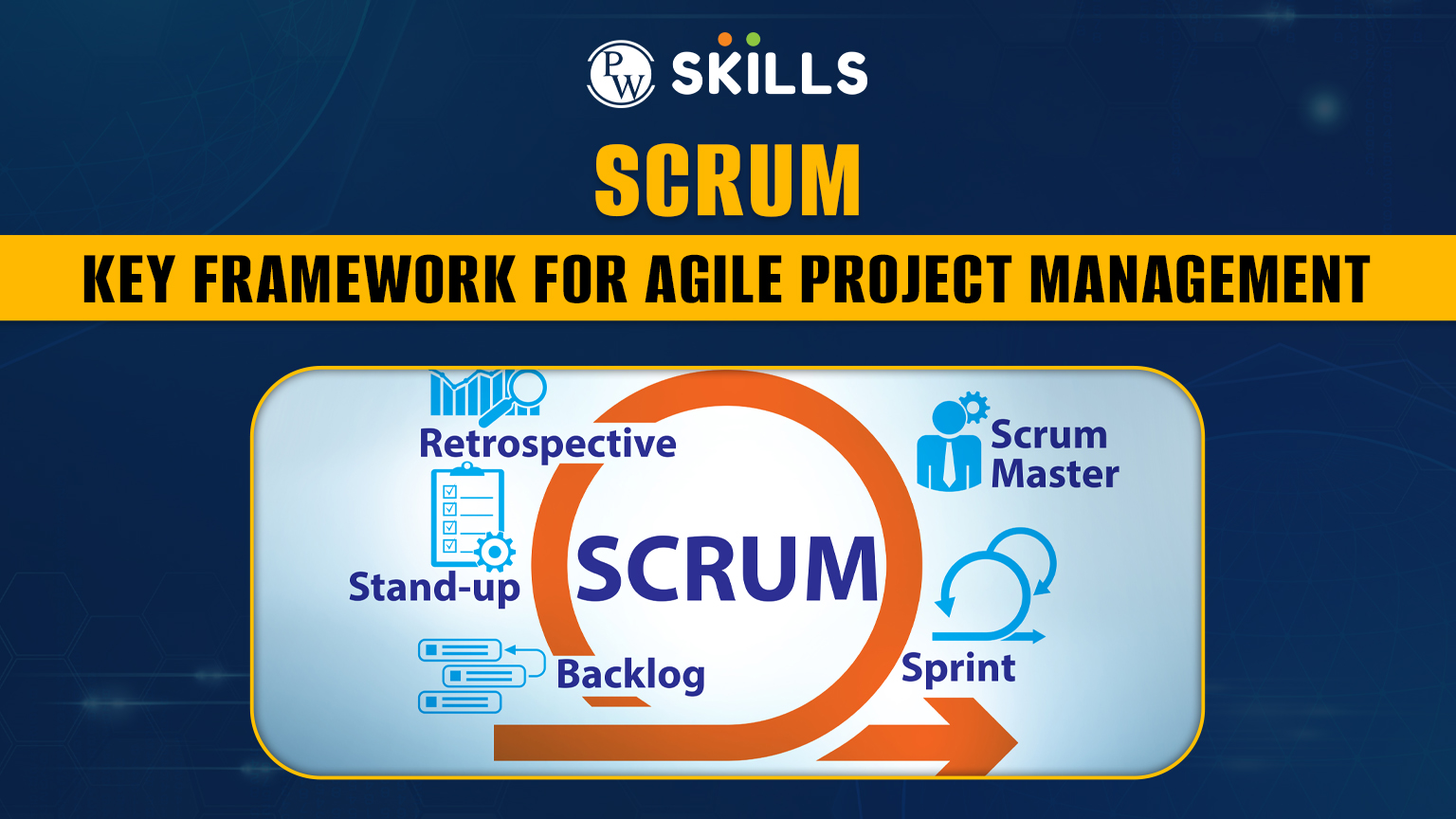The term Scrum framework first came into the picture in the 1990s as a means to take forward the agile methodology. Scrum is a widely used lightweight framework in agile methodologies that helps teams collaborate, adapt, and communicate effectively.
The term is inspired by a rugby game where the complete team comes together to move the ball forward. Similarly, in an agile scrum framework, unite the strength of teams and move the product forward. In this article, we will learn more about the Scrum framework, its uses, benefits, and applications in agile methodologies.
What Is Scrum?
Scrum is a lightweight framework used in Agile methodologies that helps cross-teams manage their tasks based on a defined set of principles and practices. Scrum is a guide that helps different teams in software development and project management to execute their work more effectively. Scrum breaks a complex project into smaller parts also known as “sprints.” These sprints are completed progressively and take the project completion forward.

- Being an agile methodology framework, Scrum helps ensure that the end product is of the highest quality which ensures customer satisfaction and maintains productivity across the team.
- The complete framework builds an environment of effective communication, collaboration, and adaptation.
- By adapting the Scrum frameworks, teams learn to work in an environment of changing requirements and adjust accordingly.
- Scrum provides us with a method to implement an effective product development life cycle with important guidelines to ensure the quality of the product.
What Scrum Has To Offer?
The Scrum framework provides a better way to understand and iterate through product development in an efficient manner. It provides extensive guidelines on how to scale product development and ensure the best quality with effective collaboration, communication, and teamwork. Let us know some of the major benefits of the Scrum framework in project management.

1. Improved Collaboration and Communication
Scrum implements regular communication through daily stand-ups, sprint reviews, and retrospectives. Members from various departments stay aligned, share updates, and address challenges promptly.
2. Increased Flexibility and Adaptability
Scrum follows an iterative approach which allows teams to adapt to changing requirements and priorities. The product backlog can be updated frequently to reflect stakeholder needs.
3. Faster Delivery of Value
The complete product development work is broken into parts also known as sprints, typically 1-4 weeks long, ensuring incremental delivery of functional products. The team ensures the delivery of value to stakeholders early and continuously.
4. Enhanced Quality of Deliverables
Regular testing and feedback loops are implemented during sprints to improve product quality. The complete focus on “done” criteria ensures that deliverables meet defined standards.
5. Increased Transparency
The use of artifacts such as product backlogs, sprint backlogs, and events like sprint reviews ensures visibility for all stakeholders. Progress and issues are clear, enabling informed decision-making.
6. Empowered Teams
Scrum fosters self-organizing and cross-functional teams. Teams take ownership of their work, enhancing motivation and accountability.
7. Better Risk Management
Scrum interprets risks and vulnerabilities at any stage and can easily be identified early through continuous feedback and regular checks in. Short sprints minimize the impact of potential failures by enabling quick adjustments.
8. Customer-Centric Approach
Customers are the most important entity in the agile method. Hence, frequent interaction and collaboration with stakeholders ensures the product meets user needs. Regular delivery of increments allows for the validation of ideas and features.
9. Focus on Continuous Improvement
Retrospectives provide a platform to analyze what went well and what didn’t in each sprint. Teams can refine their processes for greater efficiency and productivity.
How Does Scrum Work In Project Management?
Scrum is used in an agile environment to handle complex projects by promoting iterative development, teamwork, accountability, and adaptability. There are three major key roles in Scrum, i,e. Product owner, scrum master, and development team.

Scrum Key Roles
There are three different roles in the scrum framework which are mentioned below.
- Product Owners: They are also known as customers or stakeholders which defines the product’s goals and vision. They are responsible for managing the product backlog.
- Scrum Masters: They are the team of experts who ensure the implementation of the process and principles of scrum. They ensure collaboration, teamwork, and adaptation in the working environment.
- Development Team: They are responsible for building and delivering the product through sprints in an iterative progressive manner.
Scrum Artifacts
The Scrum artifacts also include three important elements used to implement effective product development.
- Product backlog: The product backlog is the list of requirements, fixes, and features that need to be maintained by the product owners in product management.
- Sprint Backlog: Sprint backlogs are a part of the product backlogs which consist of the items, features, and fixes included in a particular sprint process. It provides a complete description of the tasks that need to be completed in a particular sprint stage.
- Increment: It forms the basis of the scrum framework, where the complete cumulative output of all the completed product backlog items in successive sprints is included. The incremental progress is continuously measured and evaluated toward the project goal.
Scrum Events
There are many scrum events being followed in agile methods. Some of the key events are mentioned below.
- Sprint: A time-boxed period (typically 1–4 weeks) during which the team completes a set of tasks from the Sprint Backlog.
- Sprint Planning: A meeting at the start of each sprint where the team selects what to work on and defines a sprint goal.
- Daily Stand-Up: A short, daily meeting where team members discuss progress, roadblocks, and plans for the day.
- Sprint Review: A session at the end of the sprint where the team demonstrates completed work to stakeholders and gathers feedback.
- Sprint Retrospective: A meeting to reflect on the sprint, identify what went well, and discuss areas for improvement.
The product owners create a list of iterative development in the backlog items based on stakeholders’ requirements and needs. The team selects high priority items from the backlog and works towards the sprint goal. The items or tasks are broken into smaller tasks and worked toward in an iterative manner. Feedback and reviews are monitored to implement any changes or adjustments if needed.
Application of Scrum Framework In Agile
Some of the major applications and uses of scrum in agile methodologies are listed below.
Software Development
Scrum is used in software development to build new software products or features of the product in an iterative manner. It also fixes bugs and manages updates and improvements.
DevOps Integration
Scrum also helps in integrating devOps with the software development process and helps implement continuous integration and continuous deployment pipelines.
IT and Infrastructure Projects
Planning and executing the migration of systems to the cloud platforms and managing upgrades to existing systems in phases to minimize disruptions in IT projects is one of the major applications of the Scrum framework. It also helps in implementing cybersecurity measures to safeguard the development platforms.
Marketing
Developing and launching marketing campaigns in stages for better optimization. Also, creating new content and products in accordance with the audience feedback. Scrum also helps test and refine digital marketing strategies iteratively.
Product Development
Scrum helps in hardware development with Iterative prototyping and testing for product innovation. Also, developing and refining gadgets and devices based on user feedback. Creating IoT-based solutions incrementally to meet customer needs is also one of the applications of the Scrum framework.
Education and Training
Implementing iterative designing and testing educational programs and materials in educational development and building online e-learning platforms and tools with feedback iterations. Also, conducts training sessions in increments to adapt to participants’ learning needs.
Healthcare
Scrum also plays a helping hand in building and updating EHR (Electronic Health Record) systems. Also, creating and enhancing virtual healthcare platforms incrementally is one of the major benefit of Scrum framework.
Learn DevOps with PW Skills
Gain expertise in DevOps by enrolling in the PW Skills DevOps and Cloud Computing Course. Find out how to use advanced devOps tools like Dockers, Terraform, Jenkins, Ansible, and Kubernetes. Under the guidance of experienced mentors, work on real-world projects and receive comprehensive tutorials, practice exercises, assignments, and more. Know more about our DevOps course only at pwskills.com.
Scrum Framework FAQ
Q1. What is a Scrum Framework?
Ans: Scrum is a lightweight framework used in Agile methodologies that help cross teams manage their tasks based on a defined set of principles and practices. Scum is a guide that helps different teams in software development and project management to execute their work more effectively.
Q2. Is Scrum an agile methodologies framework?
Ans: Scrum is a lightweight agile framework used to foster effective communication, collaboration, teamwork, iterative development and high-quality end product especially in the software development life cycle.
Q3. Can Jira be used to implement the scrum framework?
Ans: Yes tools like Jira, Trello are used to manage projects, organise tasks, set communication and track progress in a scrum environment.
Q4. What is a better alternative than the Scrum framework in agile?
Ans: Kanban is a better alternative to the scrum framework in the agile method which focuses on eliminating and reducing the backlogs which increases the timeline of project completion.

